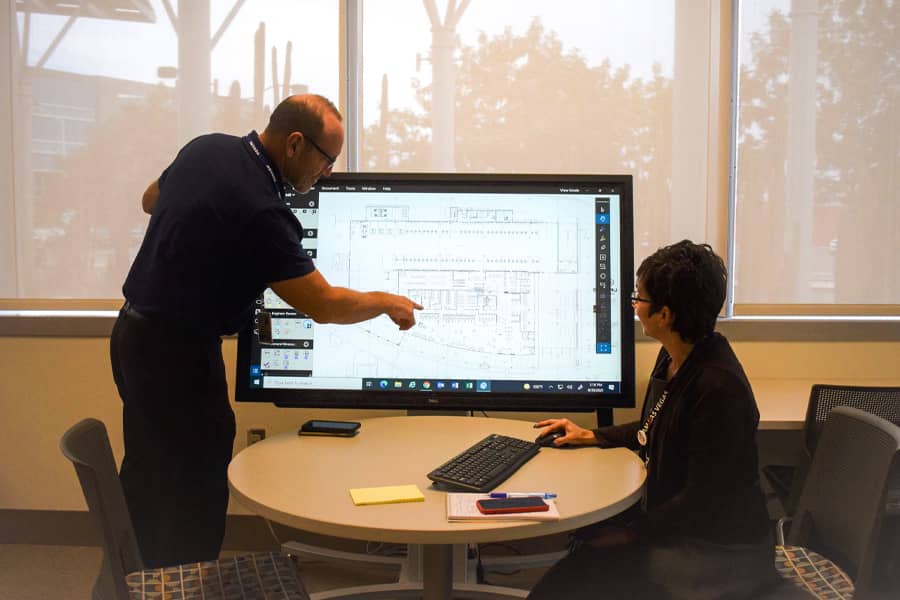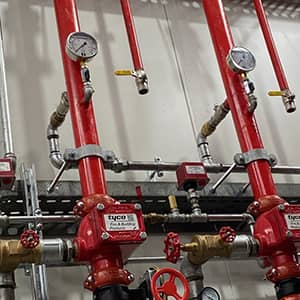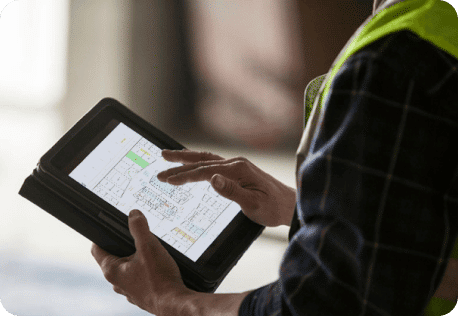From the scores of No. 1 artists who perform annually to the number of tourists who visit in hopes of finding quick fortune, the city of Las Vegas has always revolved around numbers. But while these numbers certainly provide a backdrop for the city’s legacy, they aren’t the only ones driving and defining the future growth of this iconic destination. Close to 20,000 permits a year must be approved by the city, a volume that depends on accuracy, efficiency and collaboration across multiple reviewers, disciplines and jurisdictions. A volume also too large in size and scope to utilise a traditional paper-based plan approval process, leaving the city in need of a digital transformation via a software program that could facilitate digital or electronic plan review between area developers and municipal reviewers.
‘IT had started a project designed to be an integrated concept to make as many things as possible available to the customers online – a system that could bring planning and building and licensing together into a single solution’, explains Michael Cunningham, deputy director, CBO, city of Las Vegas. ‘We saw Bluebeam as a best-of-breed when it comes to plan review and markups. So, we were looking not only for best-of-breed, but technology-wise, we needed a best-of-breed solution that provided integration capability using APIs to sync with a system like Infor, an industry-leading community development and regulation system ideal for permitting. Bluebeam Revu’s integration is so seamless to the user that links can be automated’, adds Rick Virmani, development services systems manager.
‘Having folks like our Building and Safety Director Kevin T. McOsker, CBO and city management that supported the transformation and the funding to do it, along with the support from IT was finally what helped us create a digital platform’, says Yolanda Palomo, process review coordinator. ‘We want to be seen as an innovative city and to help be a leader in modernising to help industry.’

Challenge
Under the city’s previous process, a customer would come in with 2-3 rolls of plans, for which a technician would create a project number in the city’s permitting system and manually stamp that number on the plans. A physical tag number would also be added for ease of use and location. Plans would then be checked in to the city’s permitting system by the administrative staff and stored in an ‘active’ repository for the plans examiners. Plans examiners would then send an email to the administrative staff with the plan number when they were ready to review the project. Then the examiner would physically walk to the repository to pick up the plans. The administrative staff would then retrieve the plans for the plans examiner and log it out to them. Next, a plans examiner would return the plans when their review was completed and again the administrative staff would check it back into system and store it in the repository for the next reviewer. ‘Typically, we would have at least three to four different departments reviewing the plan and following this process’, Palomo elaborates. ‘When all reviews are done, the technician would collate the final plan, confirm all the pages are included, add additional approval stamps if needed and separate a “job” set copy for the customer. The job set would be stored in the plans area and given to the customer when the permit fees were paid.’
‘Our goal is to continue to improve the online submittal process to make it easier for the customer and to streamline staff data entry, which will improve our production times.’
Michael Cunningham
Deputy Director, CBO
City of Las Vegas
Because all plan reviews were done on paper, projects could only be reviewed one discipline at a time. ‘We have five departments – structural, architectural, mechanical, electrical plumbing and land development – who review every submission’, explains Palomo. Depending on the project, there can also be traffic, sewer and fire as well, with an average review time across all disciplines ranging from a few days to a week or more per review, plus the headaches and costs associated with printing, shipping, driving or mailing the plans to the next round of approvals.
Paper plans would sometimes get lost because the person reviewing forgot to ‘check them out’ and note that they had the plans, creating time-consuming emails sent out to the entire department looking for the plans. Paper plans also take up valuable space, leaving the burden of three different storage areas and 70% of a 1,860-square-metre warehouse managed by the Las Vegas Clerk’s Office that is storing old plans. Once plans had been successfully reviewed by all disciplines, final mylars had to be created and routed to five utility companies for final signatures before the city could approve them, a process that takes six weeks and restricts projects from starting.

Solution
Bluebeam Revu was chosen as a single solution that could accommodate planning, building and licensing together into a collaborative digital environment, utilising Bluebeam’s open API capabilities to integrate seamlessly with Infor, a permitting system infrastructure allowing locational links to the plans for both submitters and plan reviewers. Rick Virmani and his IT team designed the workflows and created the automation.
‘Our volume is around 15,000 to 20,000 permits a year. And on a monthly basis, we probably do around 1,653 reviews on projects and around 500 projects a month. So, when you think about 500 projects, each one of those projects has multiple reviewers. Now COVID hits, and we’re told to go home. How do you get paper plans to five different reviewers in five different locations? I mean, if we didn’t have access to Revu, I think we would have been completely stalled for weeks. The projects would have been delayed for months.’
Yolanda Palomo
Process Review Coordinator
City of Las Vegas
‘What I like about Revu is the licence management’, says Virmani. ‘The Bluebeam licensing portal allows you to see who’s accessed it and when. It’s all very easy to administer from an IT standpoint, but for our use, the big winning capability of Bluebeam Revu is Bluebeam Studio.”
The city of Las Vegas is leveraging Studio to a great extent, as staff across departments can see the notes and markups created by others, making it easier for them to discuss issues. In addition, plan reviewers can invite customers to a Studio Session to clarify review comments directly. ‘The concurrent reviews are really great because we’re saving time across the entire plan review’, says Cunningham.
‘On paper, we’d get multiple copies of the plans, as we use consultants to help with volume and special projects, so we would have a city of Las Vegas set, a job set and then we might have a third set for special inspections. At the end of that project, we would have to go through both complete sets of plans and compare them and make sure that one didn’t accidentally get a sheet update that the other one didn’t. I mean, that whole requirement has been removed by Revu’, says Cunningham.
Bluebeam’s best-in-class Markups List and Tool Chest helped standardise reviews by implementing digital review standards such as colour schemes to indicate discipline, location, jurisdiction and so forth. This improved the online submittal process to streamline staff data entry and make it easier for the customers to submit and do the same, improving production times and creating more projects for the city of Las Vegas. ‘The Bluebeam website also has templates where you can download some of the more common markups, and so we implemented those, too. Now we have consistent and easy-to-understand markups, which make reviews faster and much easier to complete.’
Prior to launch, the city contracted with US CAD, a Platinum-level Bluebeam Reseller to train staff on Revu. ‘They had a good trainer who came onsite and did a remote training and Q&A sessions until everybody got functional. Now we have some lead people in every department that know this system and can teach others how to get going with a trainer for small group sessions’, recounts Palomo. Staff and plan reviewers also leveraged the many Bluebeam YouTube videos and tutorials offered on-demand, as well as the Bluebeam Tech Support search bar on the Bluebeam website.

The Power of Revu (And Serendipity Too)
The city of Las Vegas went live with online submittals via Bluebeam Revu in August 2019, with the goal of continuing to improve the online submittal process for the customer and to streamline its own staff’s data entry, which would improve production times. The move would prove quite fortuitous just six months later as the world stopped under the conditions of the COVID-19 pandemic.
‘With an average volume of 16,573 reviews per year in projects and an average of 8,000 permits with reviews, the city of Las Vegas expects to be saving the customers an average of US$100 (AU$144) in printing costs for each submittal for an annual savings of at least US$600,000 (AU$865,000) to the local development industry.’
Yolanda Palomo
Process Review Coordinator
City of Las Vegas
‘Our volume is around 15,000 to 20,000 permits a year. On a monthly basis, we probably do around 1,653 reviews on around 500 projects a month. So, when you think about 500 projects, each one of those projects has all of these reviewers and boom, COVID hits and we’re told to go home’, recounts Palomo. ‘How do you get paper plans to five different reviewers in five different locations? I mean, if we didn’t have access to Revu, I think we would have been completely stalled for weeks at a minimum, and overall projects would have been delayed for months.’
‘Imagine two or three days waiting around between each plans examiner, and having them come in and pick up the plan and take it home and then wait two weeks for them to be finished and bring it back for the next person to look at – after it sits for another week or two under COVID protocols’, Palomo continues. ‘It would have been a nightmare. Instead, Revu was a lifesaver because we were able to instantly respond in March by getting borrowed laptops from IT for staff who needed a laptop to work from home, and we didn’t waste any time. Since we had Studio integrated into our Infor permitting system, reviewers and clients had the links to the plans right there, so they could go into the Studio session and instantly review plans from anywhere. From my perspective, I don’t think we had any downtime due to COVID-19, other than the time that we waited to get laptops for.’
Not only was the city able to keep projects moving during the COVID pandemic, but they also continued their implementation success by cutting the previous eight-step paper-based process down to four steps, instantly eliminating days and weeks for every review. ‘I’ve had great feedback’, says a relieved Palomo. ‘We had a hospital project client actually estimate the savings for their project at US$4,930 (AU$7,100), simply by eliminating paper and the subsequent drive time to our offices. They were delighted to be able to submit online and never once step into our building.’
Plans examiners and admin staff are now using that time for more productive work, and the cost savings from the reduction of paper alone have brought six-figure savings to the local industry clients.
Conclusion
Palomo and her team have seen the value of their digital transformation with Bluebeam and plan to continue further optimising this electronic review process going forward. ‘We believe there is huge value for the customer and for the jurisdiction’, Palomo states. ‘The customer is saving time and money by not printing paper, driving to our offices and waiting in a lobby for assistance. As a jurisdiction, we are gaining efficiencies in plan review and reducing timeframes, which will also benefit the customer and community at large. Having this technology is also allowing us to be flexible and responsive in all emergency situations by giving us instant access to building plans.”
‘With less paper and fewer customers travelling to our offices, we are also helping to reduce our carbon footprint to be more sustainable in process’, Palomo affirms. ‘Further, customers are now able to submit their applications 24/7/365 – about 30% of the applications we receive are submitted when the city offices are closed. We have eliminated two other plan areas. We still have one small plans room with projects that were permitted on paper prior to using Bluebeam, leaving the only paper left in our warehouse being filled with historical plans, which will soon be digitised and archived as well.’




